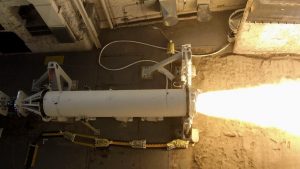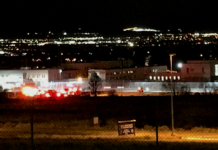
PROMONTORY, Utah, Oct. 30, 2021 (Gephardt Daily) — The U.S. military successfully test-fired a hypersonic missile rocket booster in northern Utah on Thursday.
The “static firing” of a first stage hypersonic rocket booster motor at Promontory was conducted by the U.S. Navy, in collaboration with the Army, according to a Navy statement.
The test is part of the development of an “offensive hypersonic strike capability” to be used by both branches of the military, and comes just days after China stunned the world with the launch of its own hypersonic missile, the statement said.
U.S. General Mark Milley confirmed China’s surprise launch earlier this week, and called the event a “Sputnik moment,” referring to U.S.S.R’s 1957 launch of the first orbiting Earth satellite. The dramatic development shocked the U.S. and was the impetus for the creation of NASA and the race to put a man on the moon.

”Today’s successful test brings us one step closer to the design validation of our new hypersonic missile that will be fielded by both the Navy and the Army,” said Vice Adm. Johnny R. Wolfe Jr., Director, Navy’s Strategic Systems Programs, which is the lead designer for the common hypersonic missile. ”We are on schedule for the upcoming flight test of the full common hypersonic missile.
“The offensive weapon systems will enable precise and timely strike capability against deep inland targets in contested environments,” the Navy said.
The NAVY said Thursday’s static firing was the first time a “thrust vector control system” was tested. The system is a critical component of controlling the missile in flight.
“Fielding hypersonic weapons is one of the highest priority modernization areas the Department of Defense is pursuing to ensure our continued battlefield dominance,” the Navy said.
According to the Navy statement, “Hypersonic weapons are capable of flying at speeds greater than five times the speed of sound (Mach 5), are highly maneuverable and operate at varying altitudes. The common hypersonic missile design for sea and land-based applications provides economies of scale for future production and relies upon a growing U.S. hypersonics industrial base.”






